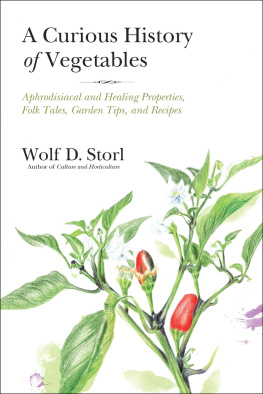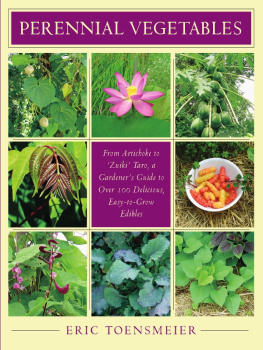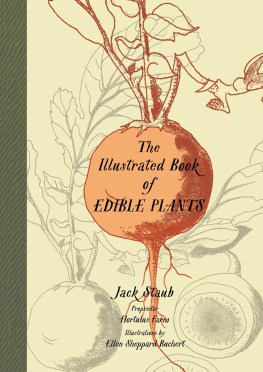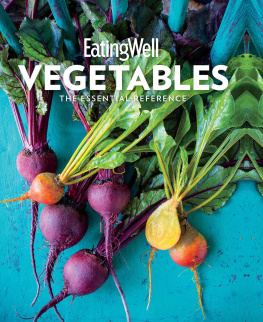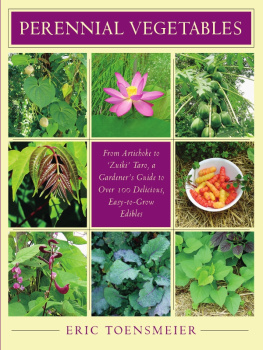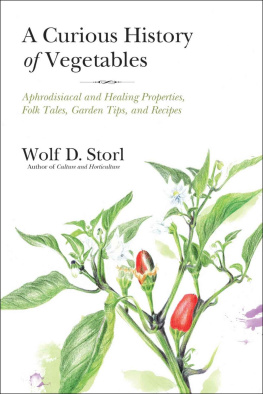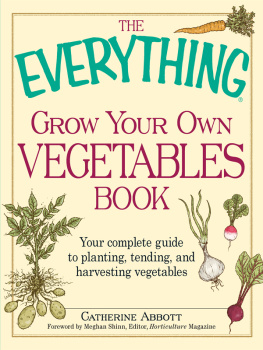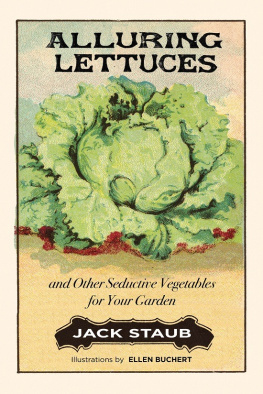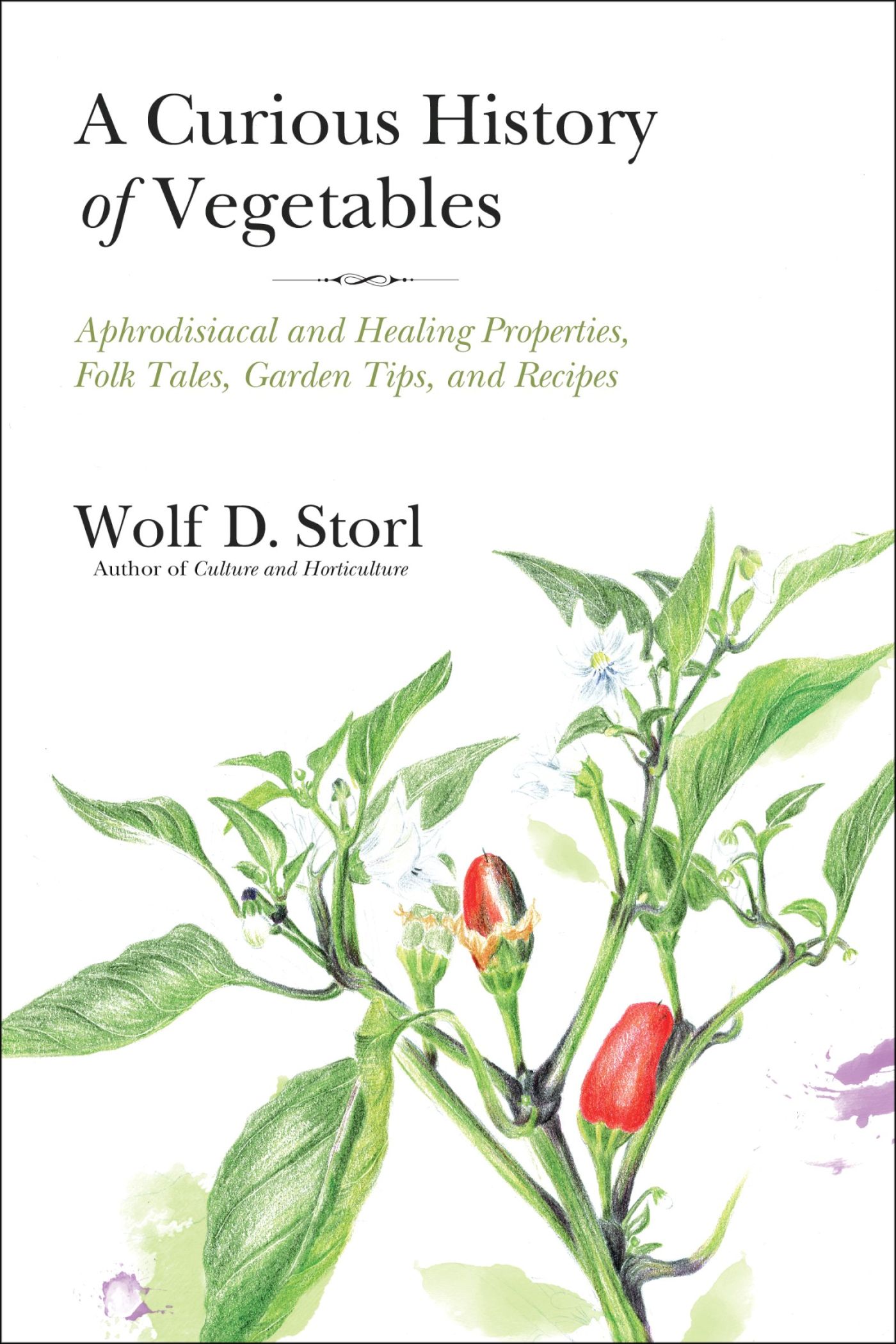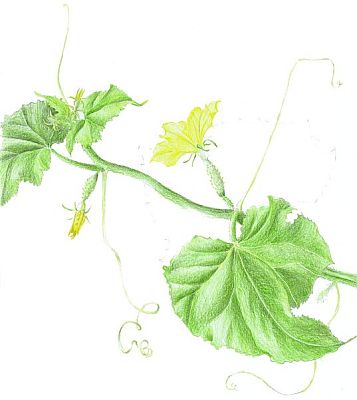The Herbal Lore of Wise Women and Wortcunners: The Healing Power of Medicinal Plants
A Curious History of Vegetables
Aphrodisiacal and Healing Properties, Folk Tales, Garden Tips, and Recipes
Wolf D. Storl

North Atlantic Books
Berkeley, California
Copyright 2016 by Wolf D. Storl. All rights reserved. No portion of this book, except for brief review, may be reproduced, stored in a retrieval system, or transmitted in any form or by any meanselectronic, mechanical, photocopying, recording, or otherwisewithout the written permission of the publisher. For information contact North Atlantic Books.
Published by
North Atlantic Books
Berkeley, California
Originally published as Bekannte und vergessene Gemse by AT Vorlag. Translated from the original German by Christine Reindal-Storl. Garden tips by Larry Berger and Wolf D. Storl; recipes by Paul Silas Pfyl.
Cover art by Barbara Hanneder
Original color illustrations by Barbara Hanneder
Cover design by John Yates
A Curious History of Vegetables: Aphrodisiacal and Healing Properties, Folk Tales, Garden Tips and Recipes is sponsored and published by the Society for the Study of Native Arts and Sciences (dba North Atlantic Books), an educational nonprofit based in Berkeley, California, that collaborates with partners to develop cross-cultural perspectives, nurture holistic views of art, science, the humanities, and healing, and seed personal and global transformation by publishing work on the relationship of body, spirit, and nature.
Garden tips by Larry Berger and Wolf D. Storl; recipes by Paul Silas Pfyl.
MEDICAL DISCLAIMER: The following information is intended for general information purposes only. Individuals should always see their health care provider before administering any suggestions made in this book. Any application of the material set forth in the following pages is at the readers discretion and is his or her sole responsibility.
North Atlantic Books publications are available through most bookstores. For further information, visit our website at www.northatlanticbooks.com or call 800-733-3000.
Library of Congress Cataloging-in-Publication Data
Names: Storl, Wolf-Dieter, author.
Title: A curious history of vegetables : aphrodisiacal and healing properties, folk tales, garden tips, and recipes / Wolf D. Storl.
Other titles: Bekannte und vergessene Gemuse. English
Description: Berkeley, California : North Atlantic Books, 2016. | Originally published as: Bekannte und vergessene Gemuse; translated from the original German by Christine Reindal-Storl. | Includes .
Identifiers: LCCN 2016009397 | ISBN 9781623170394 | ISBN (ebook) 9781623170400
Subjects: LCSH: VegetablesHistory. | VegetablesSocial aspects. | VegetablesTherapeutic use. | Vegetable gardening. | Cooking (Vegetables)
Classification: LCC SB320.5 .S77 2016 | DDC 635dc23
LC record available at http://lccn.loc.gov/2016009397
Brahman is food. Only he who knows that he is eating God, truly eats.
TAITTIREYA UPANISHAD
C ONTENTS
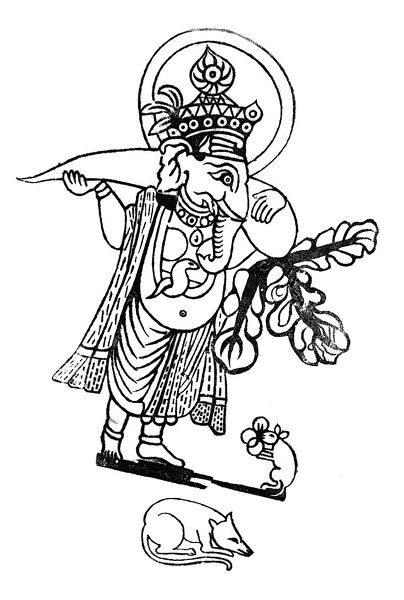
Illustration 1. The Hindu god Ganesha, the guardian of the threshold; silk-paper print I got in a shop in Katmandu, Nepal, some thirty years ago.
Our lives and those of all animals are entirely dependent on the green world of plants. In the Vedas of ancient India, the oldest scriptures of Hinduism, wise seers wrote that plants feed us as mothers feed their children; or, to say the least, they care for us like wiser, elder siblings. What a different vision this is compared to a scientific worldview that reduces plants to physical, spiritless, and soulless protoplasmic structures! Anyone who asks people who still live close to naturethe last hunters and gatherers, shamans of indigenous tribes, or even long-time gardenersabout the nature of plant life will hear there is very much more to plants than meets the eye, much more than superficial and external observation reveals. They will probably even speak of a sentient plant soul, a conscious plant spirit, and tell us that, because this plant spirit or soul is not as obvious and does not express itself as overtly as human beings or animals do, we can only approach it in ways that are beyond the external senses. These plant friends will tell us that we can see deeply into the plant world with inner senses. When we are quiet and listen, we can see the plant world mirrored in our own inner world and we can learn from the plants; the plants themselves will show us about their deeper nature and their healing abilities. We can come to experience various plant species as mighty personalities, as wise beings that mediate between heaven and earth in their own particular way and that have a very, very long historymuch longer than ours! A plant, even a garden vegetable, can definitely be a good friend, a benefactor, or even a guide into a beautiful parallel world.
Indigenous peoples who are intimately connected to their natural environment communicate with plants, as they do with animals, spirits, and gods. In the first book of the Bible we are told that the first human beings, Adam and Eve, talked to the other creatures. Shamans and native peoples who live in natures midst still have this ability even though modern circumstancesbeing submerged in all sorts of technology and living at a fast, usually machine-driven pacemake it difficult to find the quiet and inner peace to hear and communicate with nature and spirits. But we do not need to be shamans or mystically inclined to recognize plants as personalities. We can learn very much about plants by patiently observing them, for instance, while gardening. All that is necessary to develop appreciation for plants is plain and simple interest.
In this book we will explore the history and characteristics of many of the plants that we encounter in our daily lives: the plants we grow in vegetable gardens and consume with our meals. These are extremely friendly plants: anthropochores, as botanists call themplants that dance with humanity.
The vegetation that characterizes a landscape is typically an expression of the formative forces of altitude, the seasons, the climate, the bedrock and soil, and temperature and its fluctuations. The survival of aboriginal peoples everywhere was dependent on the immediate environment, the local plants and animals. The surrounding nature influenced and resonated with the folk customs, festivities, habitseven the spiritual views of the people.
Nowadays things are very different. We are not meshed with our natural surroundings in the same way. We witness continuing globalization in the supermarket, and even our modern gardens display a potpourri of plants originating from all over the world. In a single vegetable garden one may see, for example, Chinese cabbage originally from East Asia, tomatoes and beans from the jungle areas of South America, Jerusalem artichokes or sun chokes, from the North American prairie, eggplant from India, and okra from Africa. Many of them are giants compared to their original wild form; they have bigger cells and less cellulose than did their wild relatives, and most have lost their bitter or poisonous aspects, stickers, or thorns. Because they have given themselves over to human care, gardeners must indeed carefully tend to their needs; they must water them, protect them from being eaten by animals, and keep the comparatively more robust weeds from stifling them. And though this tending takes effort, most modern people believe that gardening is quite an improvement over hunting and gathering in the wild. They proudly point out that human beings have very successfully changed plant forms through breeding and selection in order to create optimal crops for themselves. But I sometimes wonder if plants did not outsmart us human beings. Did they train us to take care of themand thus make it possible for them to thrive in places they never could have without our help?

